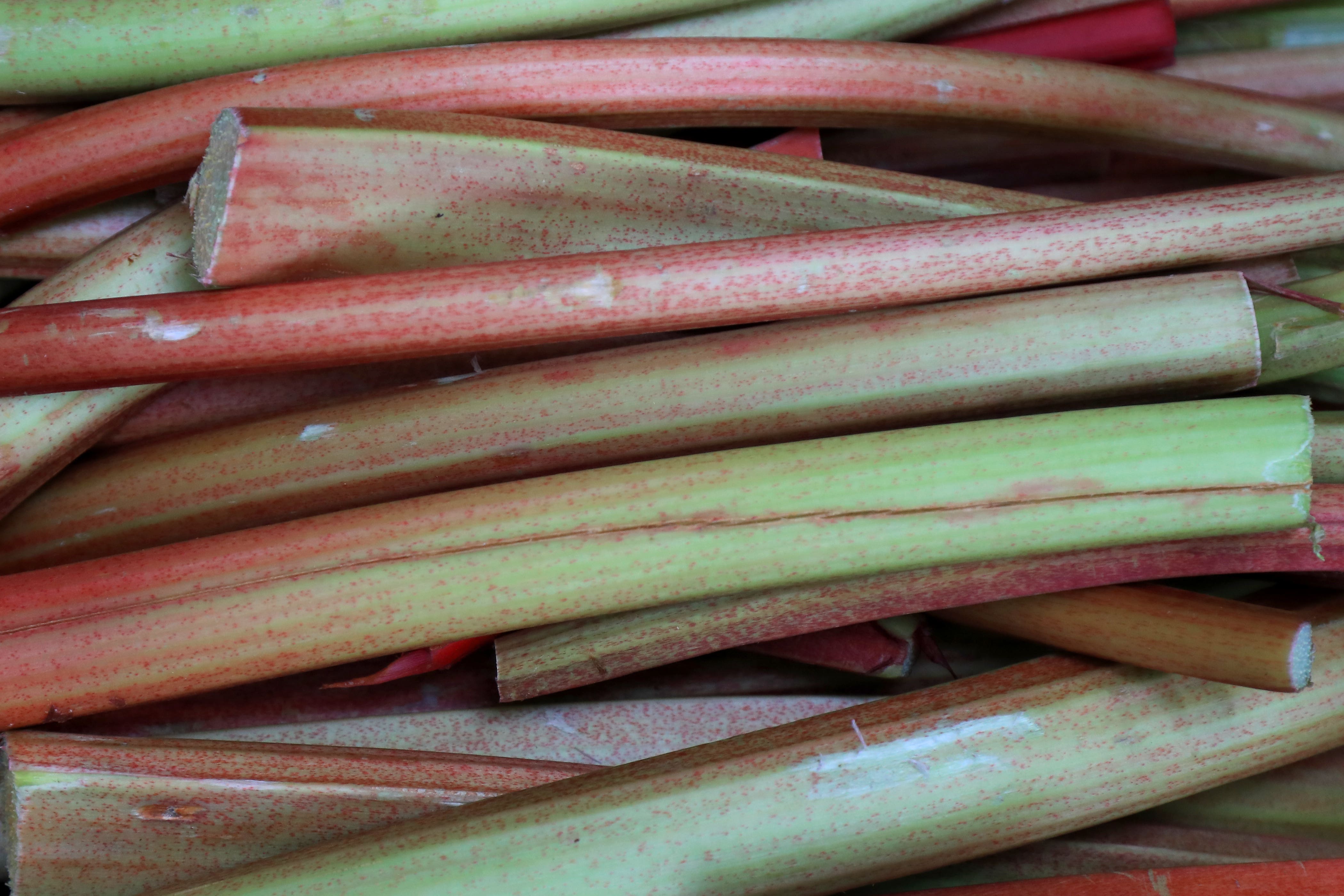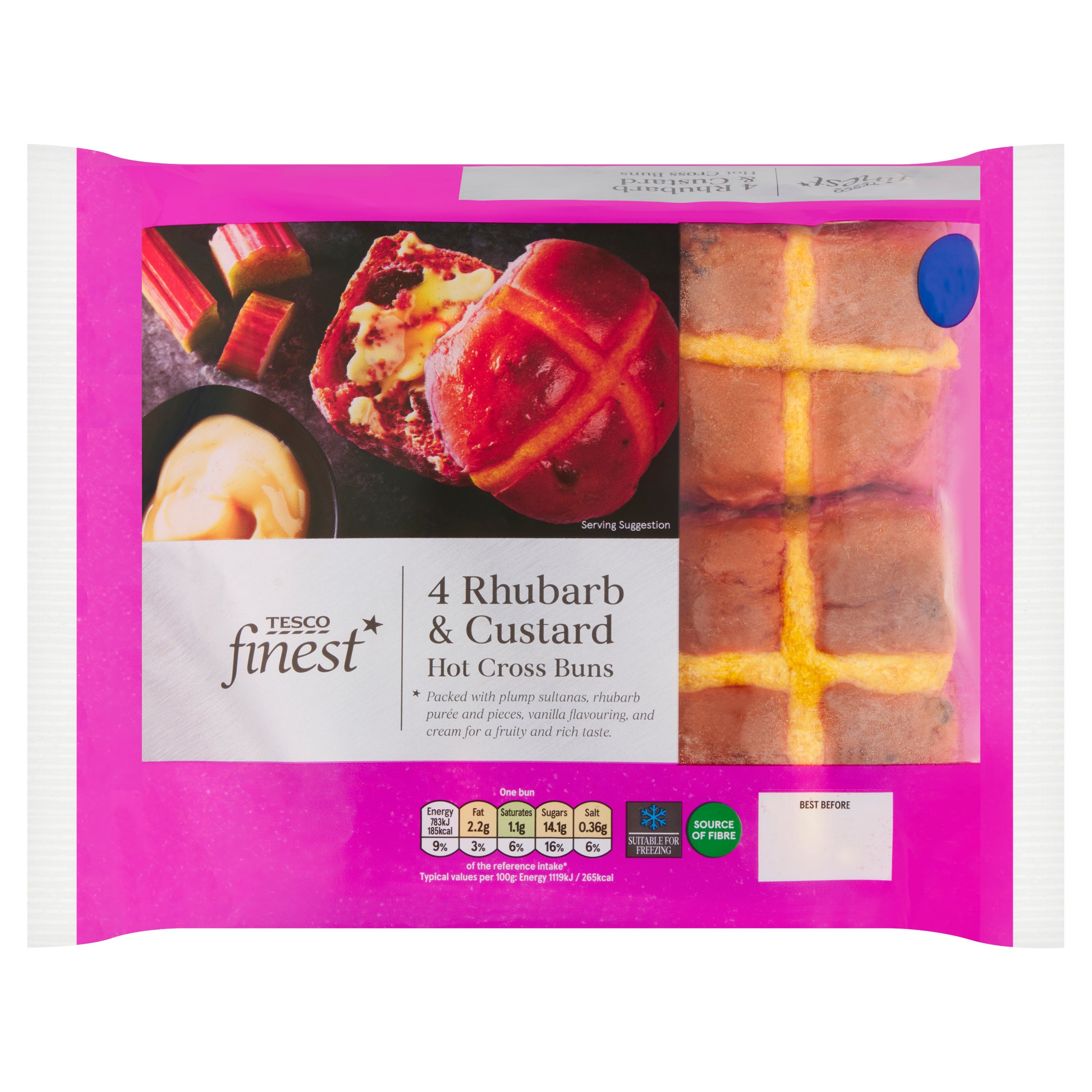Tesco has revealed customer demand for out-of-season forced rhubarb has rocketed by 200 per cent compared with the same time last year.
The UK supermarket said the increased demand had resulted in a boom in rhubarb-flavoured products.
Forced rhubarb – made to grow early through use of warmth and darkness – is widely considered to be the more tender and sweeter variety.
However, it is only available from January until around March, with the field variety grown from April until October.
Tesco supplier Place UK, a grower based in Tunstead near Norwich, has also reported that demand for forced rhubarb has soared by more than 170 per cent since 2019.
The supermarket has almost 40 different products that feature rhubarb in some form.

These include flavoured spirits such as vodka and gin, dessert pies, rhubarb and custard sweets, anti-bacterial spray, tea lights, and the latest product to hit the shelves – rhubarb-and-custard hot cross buns.
Tesco rhubarb buyer Paul Curtis said: “Rhubarb has very much become the flavour of the moment and besides being a classic dessert in crumble form with custard, is now considered one of the most popular flavourings and scents in many food, drink and household products.
“Who would ever have thought that one day there would be rhubarb-scented washing up liquid, candles and even loo paper.
“Right now is the peak of the forced rhubarb season, which lasts from the end of January until late March and it’s when rhubarb is at its sweetest and most flavoursome.
“And the current trend is creating record demand.”

Production of forced rhubarb has expanded beyond the so-called rhubarb triangle around Wakefield, Morley and Rothwell in West Yorkshire, with its popularity encouraging more UK producers to grow it.
Norfolk grower Place UK now produces more than 25 tonnes of early season forced rhubarb per year.
Place UK head of fresh operations Dan Yordanov said: “Rhubarb is a tremendously versatile vegetable, and we’re not surprised to see it now gaining popularity in a wide variety of food and drink products.
“We’ve seen demand particularly grow for the forced variety which is currently in season and as a result we have planted around 30 per cent more in the last five years.
“To give you some example of how popular it’s become, in 2019 we sold just under 25,000 packs to the food retail and manufacturing industry and last year we sold more than 65,000 packs.”
Recipe for Apple and rhubarb cinnamon rolls
Gousto
Ingredients
(Serves 10)
- 2 Jus-Rol Cinnamon Swirls Ready-to-Bake Dough
- 2 apples
- 150g rhubarb
- 1tbsp maple syrup
- 20g pecans (finely chopped)
Method
(Takes 25-30 minutes)
- Chop your rhubarb into small bite-size pieces. Peel, core and chop your apples into small cubes. Add your fruit to a saucepan with two tablespoons of water and maple syrup. Cook on a low heat for around 10-15 minutes until the fruit starts to soften.
- Open and unravel your cinnamon swirls, spread your apple and rhubarb compote over the pastry and sprinkle over the chopped pecans (saving some for garnish).
- Roll your pastry back up into a long roll, then chop each roll into five equal pieces. Do this with both packs to make 10 cinnamon rolls.
- Lightly oil the bottom of your air fryer then place in the cinnamon swirls (it’s okay if they are touching). Cook for eight to 12 minutes or until golden brown.
- Carefully remove them from the air fryer and pop them onto a serving plate. Decorate with the icing provided and sprinkle over any remaining pecans.
The first English recipes for cooked rhubarb appeared in the 18th century.
Legend has it that the origins of forced rhubarb were a happy accident in 1815, when labourers working at Chelsea Physic Garden accidentally buried a bed of rhubarb with soil while digging a trench.
When the debris was later removed, the long pink stems of forced plants were discovered – with the findings reported in the Horticultural Society Journal and commercial growers inspired by the idea.







